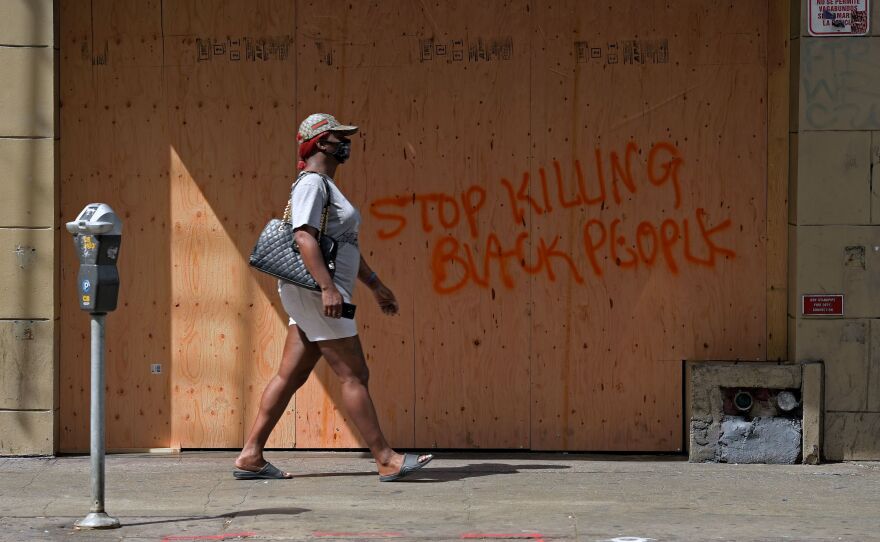Looting, fires, vandalism and the National Guard on the streets — for many, the unrest of 2020 evokes memories of the destructive riots of 1992 in Los Angeles.
Both times the protests began in anger over police violence against black men — in 1992, when four police officers were acquitted of the brutal beating of Rodney King; now, when George Floyd died in Minnesota after a policeman knelt on his neck for nearly nine minutes.
"We keep telling ourselves that somehow technology or training will end police misconduct," says Jody David Armour, a law professor who studies the intersection of race and the criminal justice system.
"But in this case, we saw that in Minnesota, the police department did a lot of that stuff. And still here we are."
Armour, who has taught at the University of Southern California in Los Angeles since 1995, talked with All Things Considered about how protests have changed in the 28 years since the Rodney King riots.
Interview Highlights
On the people who are protesting now vs. in 1992
The protests and marches today you see are multiethnic, multicultural, even multigenerational. And the allyship is something that is more pronounced now than it perhaps once was. I think a lot of people, when they saw that video of George Floyd, who weren't in the black community, felt agony. And I think this time around, more people feel that sympathy and empathy for members of the black community and are standing in solidarity with them.
On empathy for Rodney King vs. George Floyd
I think at the time of the Rodney King beating it was easier to view it as an isolated incident or as a few bad apples. But now, over time, we see a persistent and pervasive pattern. Over years and years.
We see Ahmaud Arbery in Georgia, 25-year-old black man jogging and is shot dead. Two prosecutors look at the facts and don't bring any action. Breonna Taylor in Louisville. No-knock raid, wrong house; she's killed.
The procession of hashtags that made up the Black Lives Matter movement in the 2014, 2015, 2016 years. I think more and more people are seeing that it isn't just isolated incidents, that there's something more pervasive and more ingrained in America that we have to address. The police officer's knee on the neck of George Floyd for many was a grim symbol of, kind of, America's knee on the neck of black America.
On where broader protests go from here
My sense of where the protests can go from here, hopefully will go from here, is we'll have a serious reckoning with the racial injustice that has really provoked and continues to provoke these kinds of eruptions. This is this really kind of a generational upheaval. We can either make some serious structural changes, redistribute power and wealth in a way that we haven't been willing to consider in the past. I think more people are willing to consider things like, even just as a result of the coronavirus crisis, things like universal basic income and "Medicare for All."
I think that as a result of this other kind of crisis — I think that racism is a kind of virus, too, that mutates and changes from time to time, but continues to persist — that we will take on the necessary work of redistributing wealth and power in such a way that we don't have Skid Rows, 75% of which have black faces in them. That we don't make the faces at the bottom of the well always black faces. And we do start to act as a society like black lives matter.
NPR's Jonaki Mehta and Sami Yenigun produced and edited the audio version of this interview.
Copyright 2020 NPR. To see more, visit https://www.npr.org.






